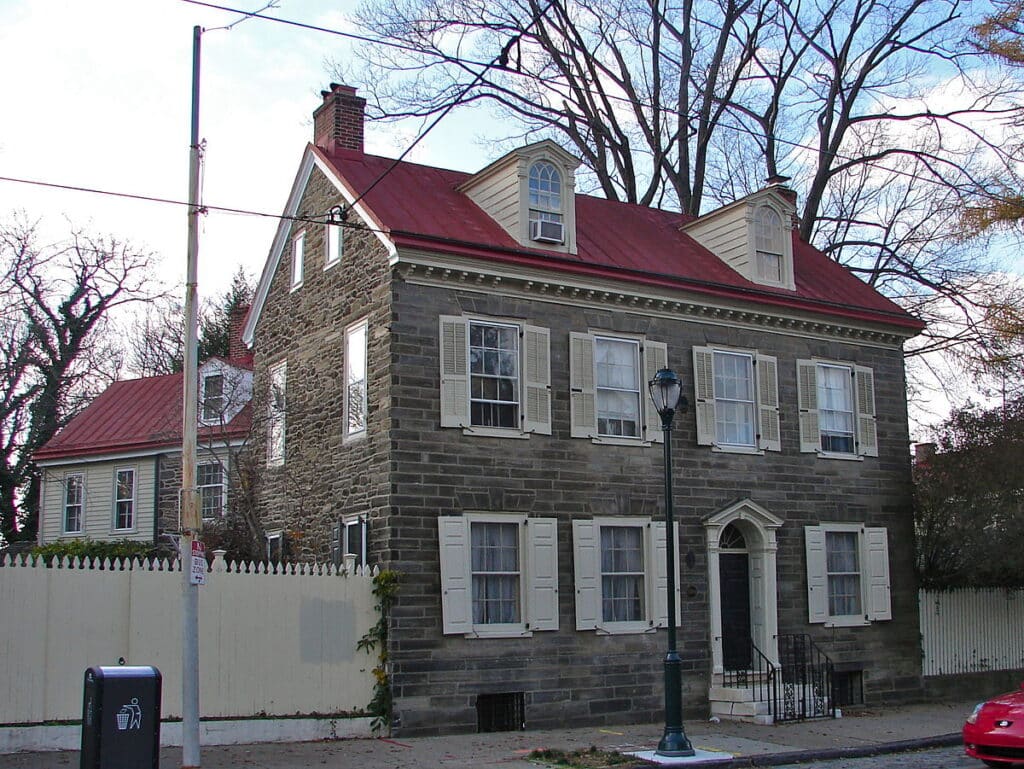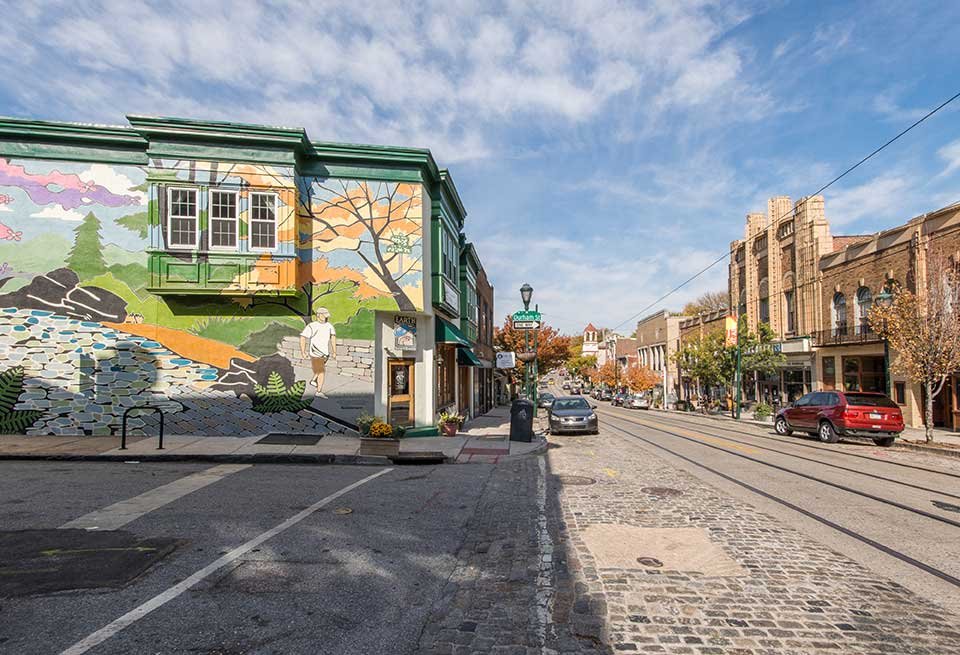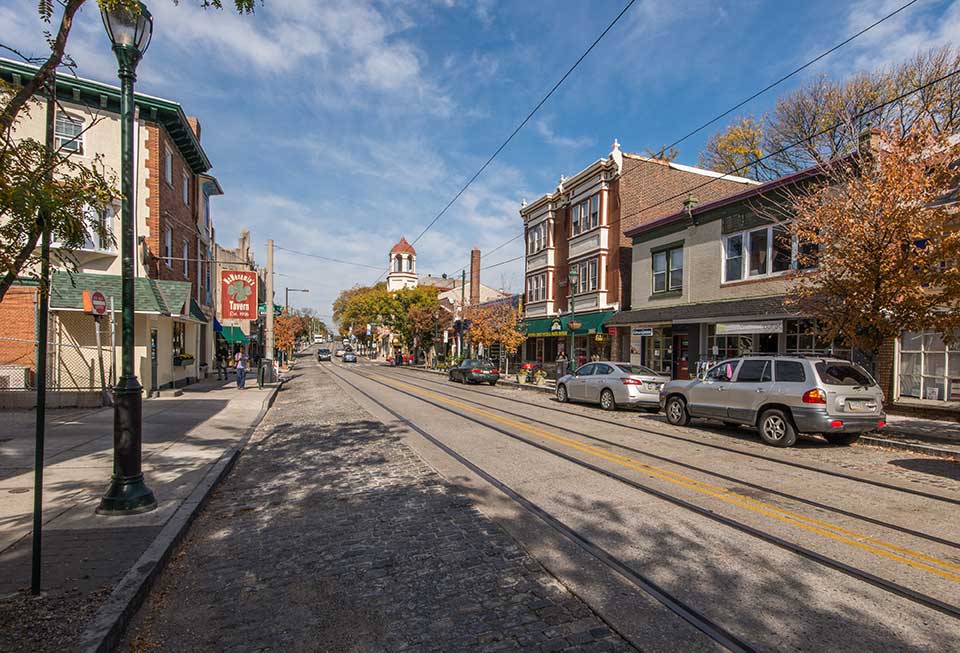Mount Airy : A Historic Gem in Philadelphia
Mount Airy, a charming neighborhood located in Northwest Philadelphia, is a true gem that combines history, diversity, and community spirit. Nestled between the Cresheim Valley and the Wissahickon Gorge, Mount Airy boasts picturesque landscapes and a rich cultural heritage. With its beautiful Victorian and colonial revival houses, tree-lined streets, and a vibrant local scene, it’s no wonder that Mount Airy has gained recognition as one of America’s top neighborhoods.
A Brief History of Mount Airy
Mount Airy’s history dates back to the 18th century when it was part of the original Germantown Township. The area was divided into two sections: Cresheim and Beggarstown. Cresheim, also known as Krisheim, was settled by German Quaker families who named it after their hometown in Germany. Beggarstown, on the other hand, emerged from the Sidelands of Germantown, where settlers began to move northwest along Germantown Avenue.
In the early 19th century, the name Mount Airy began to replace Cresheim, and the area experienced significant development. The neighborhood’s distinctive architecture, characterized by three-story gray-stone Victorian, colonial revival, and Norman and Cotswold-style houses, began to take shape. Prominent developers like Wendell and Smith, James Gowen, Ashton S. Tourison, and Frank Mauran contributed to the creation of the Pelham, Gowen Avenue, Sedgwick Farms, and Stenton areas.

Boundaries and Geography
Mount Airy is bounded by the Cresheim Valley on the northwest, Chestnut Hill on the northeast, the Wissahickon Gorge on the west, and Germantown on the southeast. Stenton Avenue marks the northeast border, beyond which lies Cedarbrook and West Oak Lane. While there is no official boundary between Mount Airy and Germantown, Johnson Street is often considered the de facto boundary. However, the neighborhoods blend together gradually, reflecting their shared history and cultural ties.
Cultural Significance and Racial Integration
Mount Airy holds great cultural significance and is recognized as one of the first successfully integrated neighborhoods in America. In the face of blockbusting, panic selling, and redlining during the late 1950s to early 1970s, Mount Airy residents organized and resisted these discriminatory practices. Their efforts fostered a racially diverse and harmonious community, celebrated for its inclusivity and progressive values.
The neighborhood’s commitment to racial integration has been praised by civil rights groups and even featured in Oprah Winfrey’s O magazine. Mount Airy’s reputation for racial harmony and balance has also been acknowledged by U.S. News & World Report. This spirit of inclusiveness has made Mount Airy an attractive place to live for individuals from diverse backgrounds.
Demographics: A Mosaic of Cultures
Mount Airy’s diverse community is a testament to its welcoming atmosphere. According to the U.S. Census Bureau’s 2021 American Community Survey, the neighborhood had a population of 29,206 residents. Among them, 57.4% identified as Black or African-American, 33.2% as White/Caucasian, 2.8% as Hispanic, 1.3% as Asian, and 5.3% as belonging to other races or multiple races.
Households in Mount Airy exhibit a variety of compositions, with 50.5% being married couples, 21.2% headed by a female householder, 7.2% headed by a male householder, and 21.1% classified as non-families. The average household size is 2.3, reflecting the neighborhood’s diversity in family structures.
Education in Mount Airy
Mount Airy is home to a range of educational opportunities, including both public and private schools. The School District of Philadelphia operates several K-5 and K-8 schools in the area, such as the Eleanor C. Emlen School, Charles W. Henry School, Henry H. Houston School, and the Anna L. Lingelbach School. Students attending these schools are also zoned to Roxborough High School.
In addition to public schools, Mount Airy boasts reputable private institutions like Blair Christian Academy, Revival Hill Christian High School, Islamic Day School of Philadelphia, Waldorf School of Philadelphia, and Holy Cross School. Nearby Germantown is home to well-regarded schools such as Germantown Friends School, William Penn Charter School, and Greene Street Friends School.
For higher education, Mount Airy residents have access to esteemed institutions like Arcadia University, Chestnut Hill College, La Salle University, The Lutheran Theological Seminary at Philadelphia, Philadelphia University, and Saint Joseph’s University.
Transportation: Connecting Mount Airy to the City
The area benefits from convenient transportation options, allowing residents to easily access other parts of Philadelphia. The neighborhood is served by two SEPTA Regional Rail lines: the Chestnut Hill West Line and the Chestnut Hill East Line. Stations like Upsal, Carpenter, Allen Lane, Mount Airy, Sedgwick, and Stenton provide direct connections to Center City.
In addition to the Regional Rail lines, Mount Airy is well-served by several bus routes, including routes 18, 23, 53, H, and L. These routes ensure that residents have reliable public transportation options for commuting and exploring the city.
Community and Lifestyle
Mount Airy’s community spirit is highly valued by its residents. The neighborhood’s main commercial district, located along Germantown Avenue, offers a vibrant array of independent shops, restaurants, art galleries, clothing stores, coffee shops, a gastropub, wine bar, fitness centers, and professional offices. The street is lined with charming stone-paved sidewalks, creating a welcoming atmosphere for pedestrians.
The Weavers Way Co-op, a long-standing grocery store in West Mount Airy, not only caters to the community’s food needs but also manages two working farms and collaborates with local schools. The co-op’s commitment to sustainability and community engagement has made it a beloved institution within Mount Airy.
For entertainment and cultural enrichment, residents can enjoy the Quintessence Theatre Group’s performances at the historic Sedgwick Theater. This Art Deco movie theater, built in the 1920s, adds to the neighborhood’s cultural revival and serves as a hub for artistic expression.

Notable Residents and Institutions
Mount Airy has been home to many notable individuals who have made significant contributions to various fields. Sadie Tanner Mossell Alexander, the first African American woman to earn a Ph.D. from the University of Pennsylvania, resided in Mount Airy. Other notable residents include musician Eric Bazilian, baseball player Jesse Biddle, cartoonist Sandra Boynton, and architect Denise Scott Brown.
The neighborhood is also home to several religious and cultural institutions. The Germantown Jewish Centre, P’nai Or Jewish Renewal Congregation of Philadelphia, and Chabad-Lubovitch of Northwest Philadelphia serve the Jewish community. Mount Airy is also host to national offices of Jewish organizations like Aleph, Alliance for Jewish Renewal, the National Havurah Committee, and The Shalom Center.
Preserving History: National Register of Historic Places
Mount Airy takes pride in its rich historical heritage, with numerous properties listed on the National Register of Historic Places. These include the Violet Oakley Studio, Nugent Home for Baptists, Mt. Airy Station, Malvern Hall, Eleanor Cope Emlen School of Practice, Presser Home for Retired Music Teachers, Cliveden, Upsala, Beggarstown School, Michael Billmeyer House, Daniel Billmeyer House, Grace Church, Mt. Airy, Henry H. Houston School, Robert M. Hogue House, Charles Wolcott Henry School, Edward B. Seymour House, and McCallum Manor. These landmarks serve as a reminder of Mount Airy’s architectural and cultural significance.
Mount Airy stands as a testament to the power of community, diversity, and historical preservation. With its unique blend of architectural beauty, cultural heritage, and inclusive spirit, this neighborhood continues to be a cherished place to call home for residents of all backgrounds. Whether strolling along Germantown Avenue, enjoying a performance at the Sedgwick Theater, or exploring the natural wonders of the Cresheim Valley, this Philadelphia neighborhood offers a vibrant and welcoming experience for all who visit.
